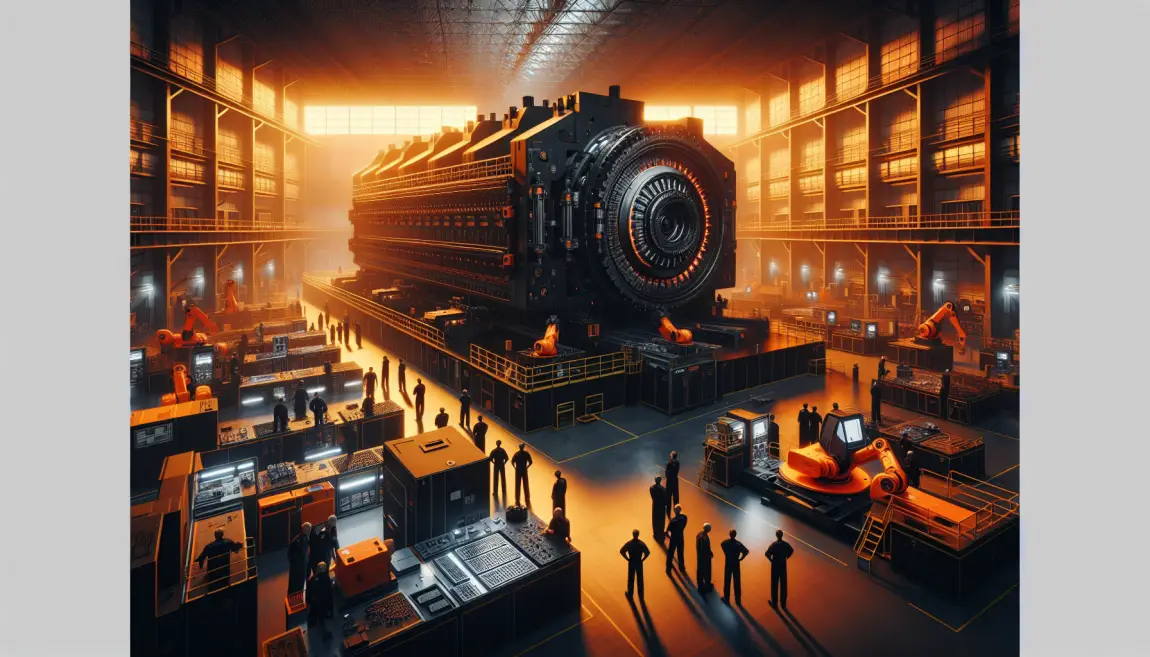The introduction of the world's largest resin transfer molding (RTM) press by Langzauner, in collaboration with the University of Sheffields Advanced Manufacturing Research Centre (AMRC), is a landmark development in the field of aerospace manufacturing. The core achievement of this innovation lies in its ability to markedly reduce the manufacturing time for large aero-structural componentsa process that traditionally takes up to 40 hours, now reduced to mere four hours without compromising the quality of the final product. This breakthrough not only epitomizes the advancements in manufacturing technologies but also potentially sets new standards for the production of aerospace components.
The implications of such a technological upgrade are vast. Initially, one can observe the direct benefit in terms of increased production efficiency. Manufacturers can now expect a significant reduction in lead times, which in an industry as complex and scale-intensive as aerospace, can translate into substantial cost savings and faster product deliveries. However, the impact transcends beyond just operational efficiencies.
Strategic Impacts on Aerospace and Beyond
Strategically, the deployment of such advanced manufacturing technologies can alter competitive dynamics within the aerospace industry. Companies equipped with such capabilities may gain a significant advantage in terms of fulfilling contracts faster and potentially with a higher level of customization due to the flexibility offered by reduced cycle times. This shift might influence global supply chains, requiring suppliers and competitors alike to reassess their capacities and technological advancements to remain relevant in the market.
Furthermore, the environmental aspect of this innovation cannot be overlooked. The aerospace industry, among others, faces increasing pressure to reduce its carbon footprint and enhance sustainability practices. Faster production cycles enabled by efficient technologies such as the RTM press imply lesser energy consumption and, consequently, reduced environmental impact per component produced. This aligns well with the global push towards greener manufacturing practices, positioning companies like Langzauner and their collaborators at AMRC at the forefront of not just industrial innovation but also environmental stewardship in manufacturing.
Challenges and Considerations
Despite these advancements, the integration of such high-scale, innovative technologies comes with its set of challenges. The initial capital investment for setting up and maintaining such large presses can be substantial. Moreover, the shift towards advanced manufacturing requires a skilled workforce capable of managing and optimizing these new systems. Training and development, thus, become crucial components of the implementation strategy. Additionally, given the rapid pace of technological advancements, there is also the risk of such technologies becoming obsolete as newer, more efficient solutions emerge.
In conclusion, the development of the worlds largest RTM press by Langzauner represents a significant leap forward in manufacturing technology with the potential to revolutionize not just the aerospace sector but also set a precedent for other industries. The strategic, operational, and environmental impacts of this technology demonstrate a forward-thinking approach to manufacturing that balances efficiency with sustainability. As we move forward, it will be imperative for industry leaders to continuously evaluate and adapt to these technological advancements to stay competitive and environmentally conscious.
View original article:
https://www.plasticstoday.com/automotive-mobility/world-s-largest-resin-transfer-molding-press-set-to-revolutionize-aerospace-manufacturing



Leave a Reply